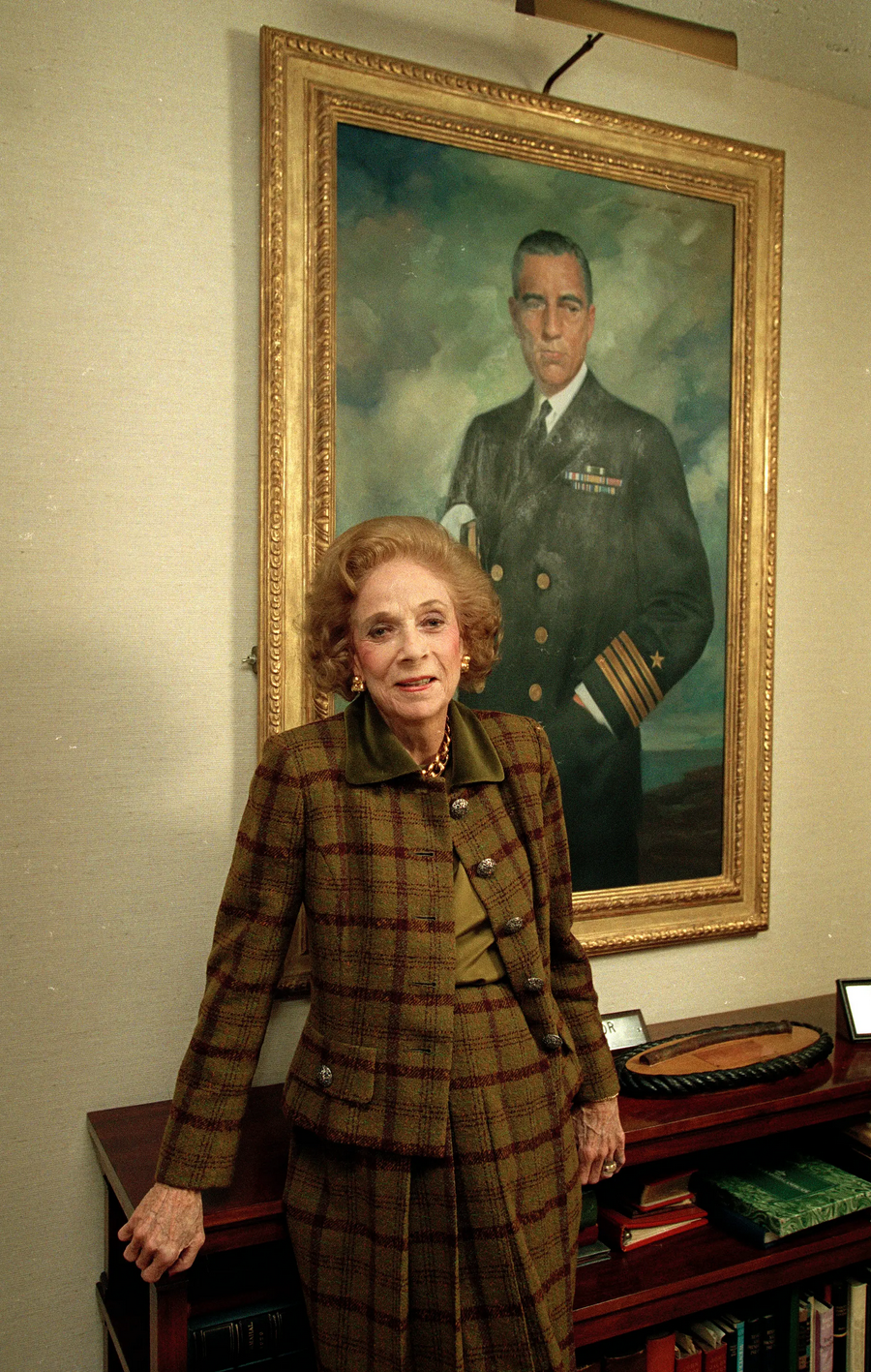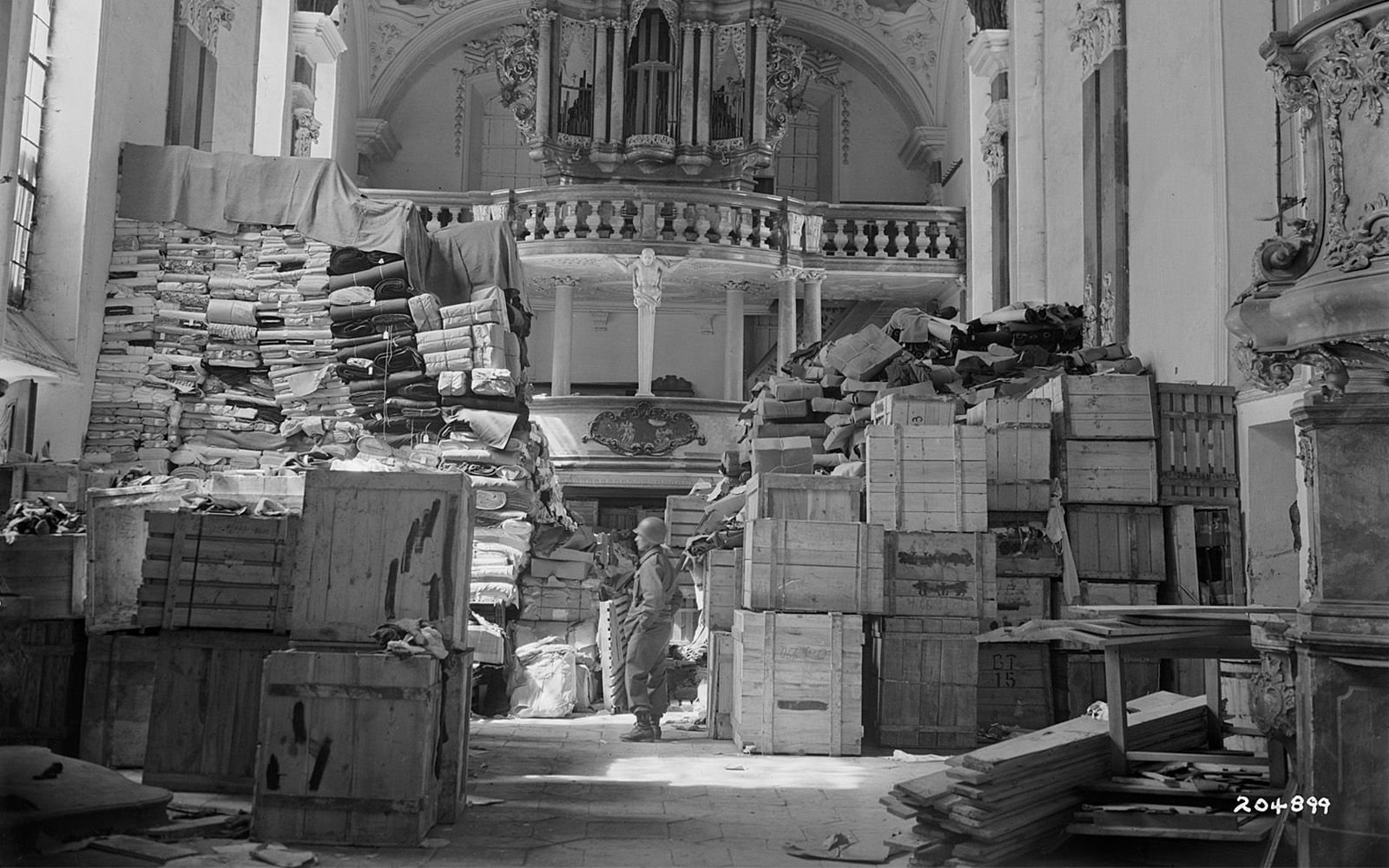The saga begins in 1935 when the painting was purchased by the Jewish collectorHedwig Stern from Munich’s prestigious Heinrich Thannhauser Gallery.

Hedwig and Fritz Stern, 1935.
However, as the ominous cloud of Nazi persecution gathered strength in 1936, Stern’s family attempted to flee, only to have their beloved artwork seized by the Gestapo.
Fast forward to 1948, and the painting found its way to New York in the hands of Thannhauser’s son, who subsequently sold it to Vincent Astor. By 1955, Vincent Astor’s wife had entrusted the gallery Knoedler & Co. with the task of finding a museum willing to house this significant artwork.

Brooke Astor, the wife Vincent Astor.
Enter Theodore Rousseau, the Met’s curator, who gave the green light for the acquisition, despite Knoedler’s presence on the State Department’s “red flag” list of dealers in looted Jewish treasures. The purchase was executed for $125.000, setting the stage for what would become a mysterious and contentious chapter.

Theodore Rousseau, Met’s curator.
In 1972, rumors swirled that Rousseau had orchestrated a covert sale of the painting, brokered through Marlborough Galleries. The exact amount involved in this transaction remains shrouded in secrecy, with the Met asserting it exceeded $75.000. Curiously, the Met contended that the artwork was of “lesser importance” and had been sold to fund the acquisition of a Velázquez painting. However, the Stern family vehemently disputes this narrative, insisting that the painting had, in fact, been purchased in 1971.
The enigma deepened when Rousseau passed away in 1973, and the Met, perhaps in a bid to conceal secrets of the past, ordered the sealing of his papers until the year 2073.

The Met, New York.
Today, the ownership of this masterpiece remains obscured by a veil of uncertainty, with Stern descendants asserting that Greek shipping heirs Basil and Elise Goulandris may have been the apparent buyers in 1972.

Basil and Elise Goulandris.
The Goulandris couple’s foundation, responsible for a new Athens museum, listed the painting in its 2019 catalog. However, it conspicuously refrained from disclosing the Stern family’s ownership or any previous associations.

The Goulandris Foundation’s gallery in Athens.
In response to these allegations and a looming legal battle, nine of Stern’s heirs are pursuing legal action against both the Met and the Greek museum’s operators, alleging decades of cover-up and seeking the painting’s return. The Met, on its part, vehemently denies any knowledge of the painting’s looted history. This case, if fully unraveled, could potentially unveil the museum’s role in acquiring artworks during the tumultuous period of World War II.

Hedwig and Fritz Stern and their daughter Eva (left), 1948.
Let’s note that a similar Van Gogh work, Cabanes de bois parmi les oliviers et cyprès (1889), sold at auction in 2021 for more than $71 million (Christie’s, New York, November 2021)!

Vincent van Gogh, Cabanes de bois parmi les oliviers et cyprès, 1889.
Oil on canvas, 45.5 x 60.3 cm.
Sold for $71.350.000 (Christie’s, New York, November 2021).
Nazi looted artworks
During World War II, the Nazis stole more than 600.000 art pieces from Jewish people. Many thousands of these precious artifacts found their way into museums scattered across the globe. Among these institutions, The Metropolitan Museum of Art, known as The Met, stands as the largest museum in the United States. Within its vast collection, it holds records of 3.403 items with Nazi-era provenance, yet a mere 1.107 of these items are currently on public display. The Museum of Modern Art has about 800 works that were or could have been in Continental Europe during the Nazi era. Last year, the Guggenheim Museum discovered that nearly 275 works of its collection may have changed hands in continental Europe between 1932 and 1946.

Nazis looted artwork.
The Neue Galerie in New York has acquired Gustav Klimt‘s Adele Bloch-Bauer I (1907), the most famous painting in its collection, after it was returned to the heir of the original Jewish owner, Maria Altmann. It was seized by the Gestapo in Vienna in 1939.

Gustav Klimt’s Adele Bloch-Bauer I (1907) at the Neue Galerie in New York.
The Guggenheim Foundation returned a painting by Ernst Ludwig Kirchner, Artillerymen (1915), to Alfred Flechtheim‘s heirs in 2018. The Nazis had stolen the painting from Flechtheim, a Jewish art dealer.
In May of the previous year, New York State marked a significant milestone by becoming the first jurisdiction in the United States to introduce a law aimed at museums. This law mandated that museums prominently label Nazi-looted art in their galleries. The law’s rationale was clear: to ensure that the origins of these stolen works are no longer concealed, as many museums had done, but are openly recognized.

US troops finding a collection of looted art hidden in Neuschwantstein Castle at Fussen near the Swiss frontier in Austria, May 1945.
The mission to rectify the wrongs done to art looted from Jewish victims during the war and beyond has made significant strides in recent decades. A pivotal moment arrived in 1998 when forty-four countries joined hands to sign the Washington Declaration. This historic agreement committed these nations to intensify their efforts in returning plundered artworks to their rightful owners or heirs. The declaration’s influence reverberated, leading to the enactment of new laws, such as the US Holocaust Expropriated Art Recovery Act of 2016. This legislation extended the time limit for filing restitution claims, providing more opportunities for justice.
Also, Commission for Looted Art in Europe and the World Jewish Restitution Organisation in New York pushing curators to adequately communicate the origins of art seized by the Nazis.
The American Alliance of Museums, meanwhile, maintains the Nazi-Era Provenance Internet Portal. It currently lists close to 30.000 objects at 179 participating museums, including 16 museums in New York with 2.370 Nazi-era pieces.

A trove of Nazi loot found by US troops in Bavaria, Germany, April 24, 1945.
European museums have also embarked on the path of restitution in recent years. In February 2022, a new French law emerged, allowing the return or transfer of fifteen paintings, drawings, and sculptures from French public collections to the heirs of Jewish victims who suffered spoliation before and during the Second World War. Notable pieces among them include Gustav Klimt‘s Rosiers sous les arbres, held by the Musée d’Orsay, and eleven drawings by Jean-Louis Forain, Constantin Guys, Henry Monnier, and Camille Roqueplan. This year, France further solidified its commitment to righting historical wrongs with a definitive law on the restitution of cultural property looted during the era of anti-Semitic persecution from 1933 to 1945.

Gustav Klimt, Rosiers sous les arbres, circa 1905.
A few days ago, seven artworks by the Austrian artist Egon Schiele, collectively valued at over $9.5 million, were rightfully returned to the heirs of Fritz Grünbaum – a Jewish cabaret artist, tragically perished at the hands of the Nazis in the Dachau concentration camp in 1941. These artworks had recently been seized from both public and private collections across the United States, including prestigious institutions like the Museum of Modern Art (MoMA) and the Morgan Library & Museum in New York. Additionally, pieces from the collection of Neue Galerie founder Ronald Lauder were included in this return.

Egon Schiele’s Portrait of a Boy (left) and I Love Antithesis (right) are among the works recently repatriated to the heirs of Austrian Jewish collector and cabaret artist Fritz Grünbaum

Manhattan District Attorney Alvin Bragg speaks during the 20 September ceremony marking the return of seven Egon Schiele works to the heirs of Fritz Grünbaum.
The Kunstmuseum in Bern has taken on a significant role in addressing the issue of Nazi-looted art, particularly after inheriting Cornelius Gurlitt‘s controversial collection. This museum in Bern, Switzerland, has hosted two exhibitions dedicated to shedding light on this complex and troubling chapter of art history.
Meanwhile, across the Atlantic in New York, the Jewish Museum has also made a valuable contribution to this ongoing dialogue. In 2021, the museum organized an exhibition titled “Afterlives: Recovering the Lost Stories of Looted Art.” This exhibition aimed to bring to the forefront the untold stories and narratives behind artworks that had been looted during the Nazi era, emphasizing the importance of restoring their histories and rightful ownership.
Although significant strides have been taken in the restoration of stolen art from the Second World War and in holding museums accountable for the histories of the pieces they exhibit, there is still much work to be done, as evidenced by the current demand for the return of Van Gogh’s La cueillette des olives (1889).
The duty of remembrance is imperative, particularly as half of Americans are unaware of the atrocities committed against Jews during the Nazi regime*. This alarming statistic highlights the ongoing responsibility to educate, remember, and rectify historical injustices, ensuring that the lessons of the past are not forgotten, and that justice prevails in the world of art restitution…
* according to a 2019 Pew Research Center survey.